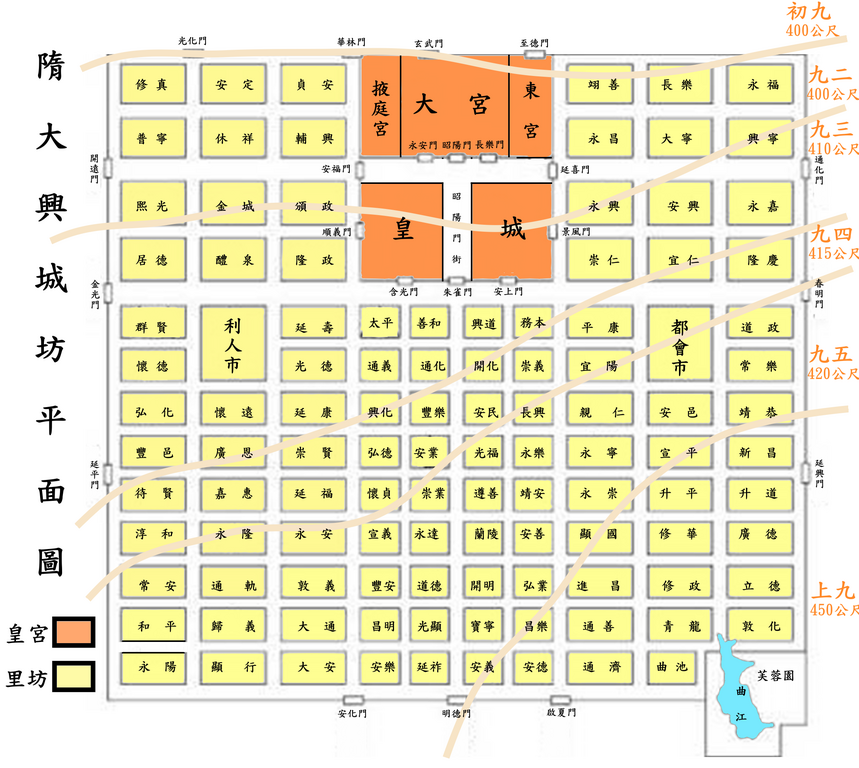Class Project: Tang Dynasty capital city build with MinecraftEdu
My students and I recently completed a project with MinecraftEdu that I am especially proud of. As a culminating project for our unit on medieval China, we recreated the Tang Dynasty capital city of Chang'an. The Tang Dynasty (7th-10th century) is considered a golden age for Chinese art, literature, and philosophy. It is one focus for 7th grade world history in California. The capital city of Chang'an, current city of Xi'an, was considered the largest city in the world at the time with over one million residents. It was laid out in a formal grid fashion but was not a perfect rectangle as it was designed to resemble the Big Dipper. I found several illustrations that included a plan for the city.

The direct goals for my lesson included:
placing students in collaborative build groups,
assigning each group of 2-4 a city block upon which they were to build a replica Chinese structure
build on background knowledge gained in the previous two weeks and research and write about the lives of citizens living within and just outside the city walls.
I divided the city blocks amongst my student groups and placed a schematic Chinese pagoda within the walls that I designated as the Emperor's Palace. I placed several other smaller Chinese styled buildings outside the city walls and away from the build zone so that students could study the architectural features and attempt to incorporate them into their buildings. This is how we began day one.
I have 145 history students that funnel through my classroom each day. I also teach a game design class that has 30 students in it. I was very unsure of how MinecraftEdu was going to perform over five classes and five days of work. I run MinecraftEdu from my 4-year-old teacher iMac that has 4 GB of RAM. I have a classroom set of three-year old Acer Aspire One netbooks. The are running Ubermix, a free Linux-based OS designed for schools that I highly recommend.
I adjusted the video settings on the netbooks and turned off or minimized several taxing settings. My classroom has its own Airport router and my iMac has a static ip issued to it. I'm pretty self-contained and I like it. Despite having older and slower machines, a heavily used network, and a multi-tasking iMac as a server, I did not have a single issue over the six-day course of the activity. We were able to devote every minute of each period collaboratively learning in a virtual world.
The build was so popular that I opened my classroom at lunch and had a packed house each day. Students were experimenting with textures, design options, and colors in an effort to replicate medieval Chinese buildings. We would begin each period with a discussion of topics such as social class and housing, rights and privileges of the upper class, job descriptions, and warfare. We made cultural observations and comparisons with our own and with societies that we previously covered in class.
After five days of building, we shifted to writing about the occupants of our city. Students used Google Docs to write and conduct further research. They generated Chinese names to apply to their building and when they were finished with their paragraphs, having checked spelling and grammar, they went back into Chang'an and placed their information inside a special "info block" unique to MinecraftEdu. They placed the block next to the front entrance to the home, park, or place of business they created and signed their name.
Our city now has actual residents living in it. The farms have crops and animals and the merchant stalls are ready for business. Points to work on for next year include:
making sure all of my students have the time to place their writing in the world they created
perhaps do some of the writing before entering the world
extend the lesson to include the Mongol invasion of China from the north
place Custom NPC's in the world to act as guides with dialog written by students
have students post a screencast tour of their work on their blog.
take a crack at the interiors
I am very proud of what my students accomplished with this project in such a short period of time. We finished within my two-week goal and had great fun learning in the process.









